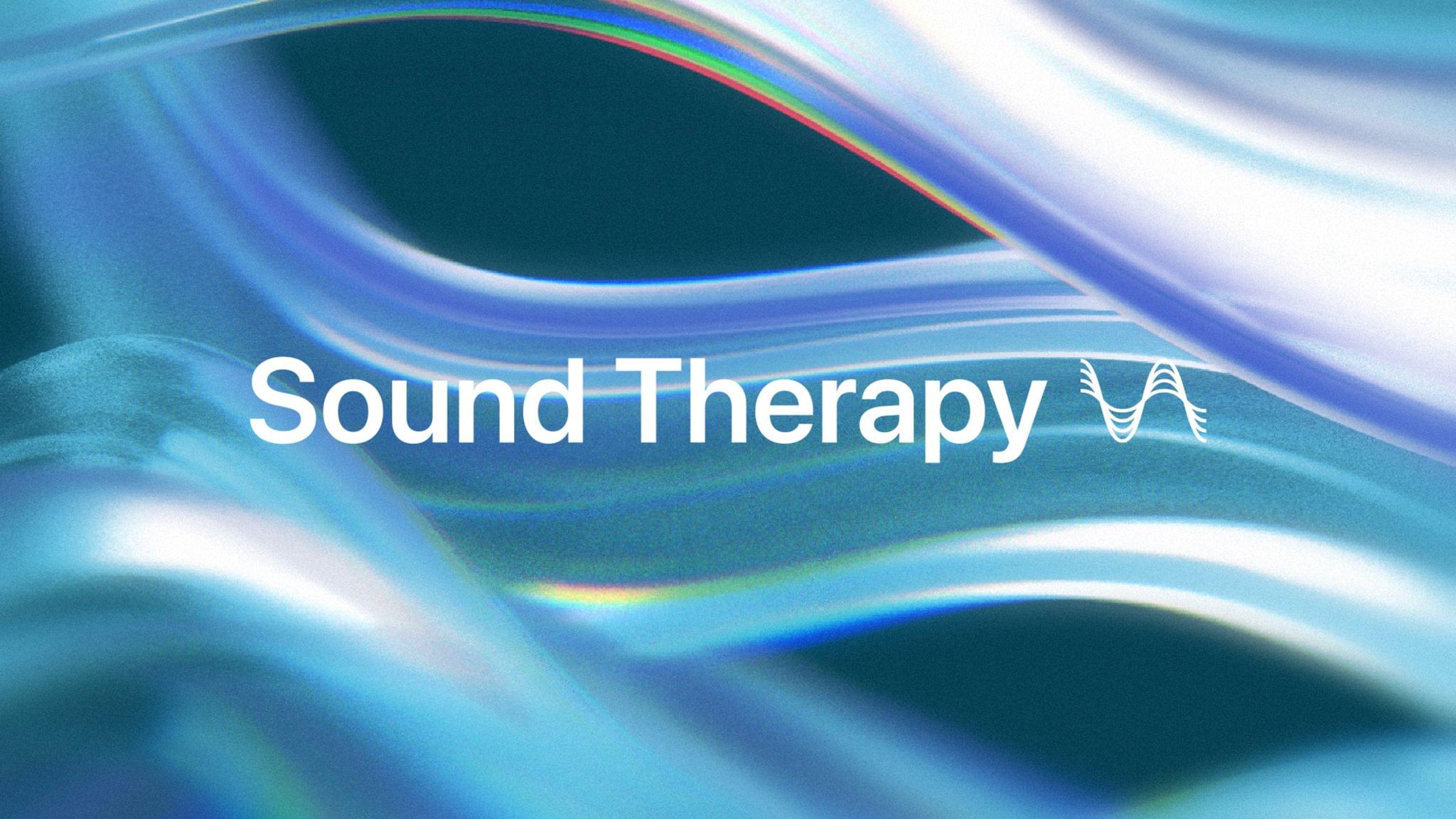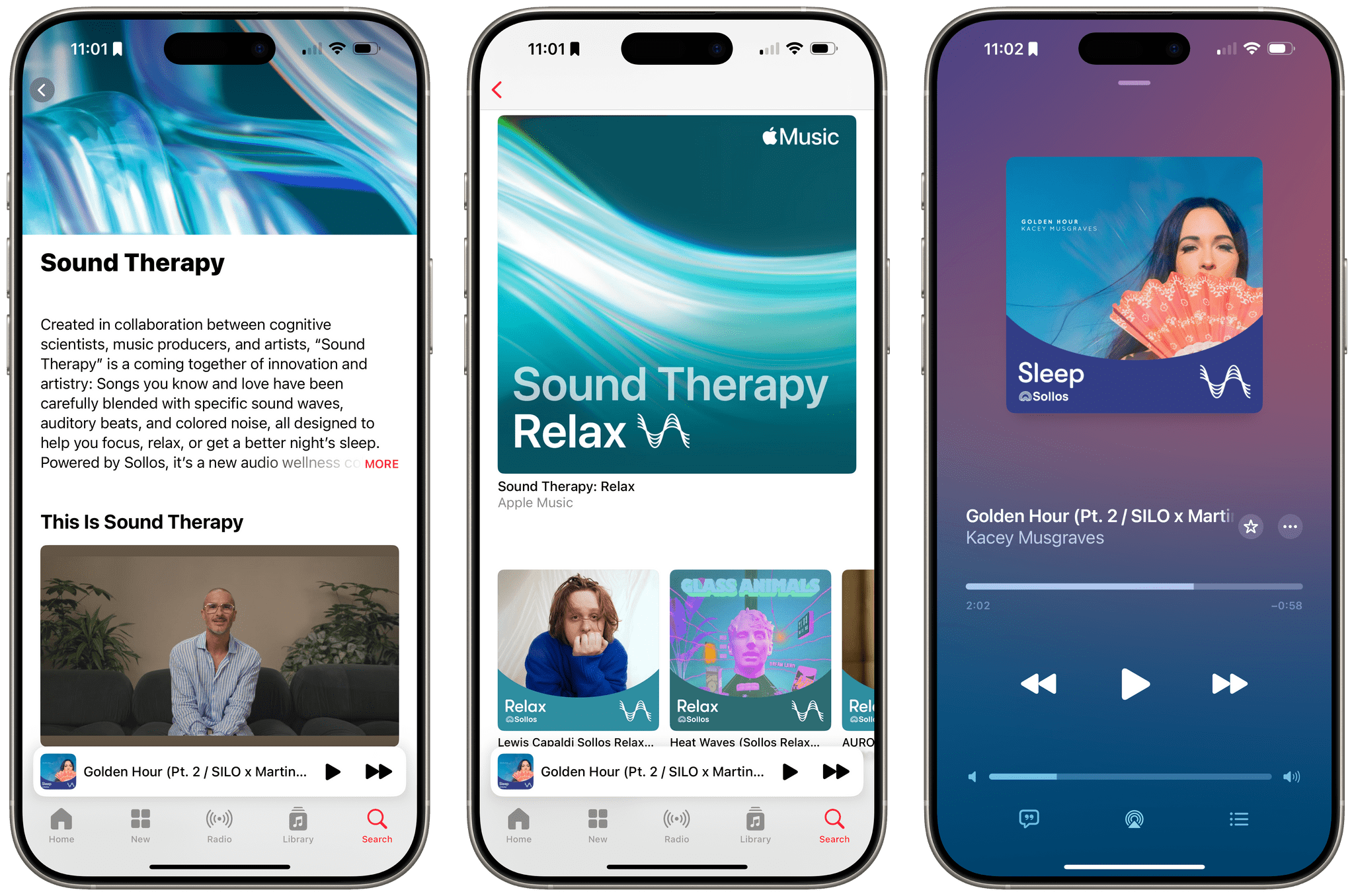I’ve always been envious of people who can listen to music while they work. For whatever reason, music-listening activates a part of my brain that pulls me away from the task at hand. My mind really wants to focus on the lyrics, the style, the mix – all distractions from whatever it is I’m currently trying to do. It just doesn’t work for me.
But under the right circumstances and with the right kind of music, you can create an environment that is conducive to focus. At least, that’s the idea behind Apple’s recent collaboration with Universal Music Group. It’s called Sound Therapy, a research-based collection of songs meant to promote not only focus, but also relaxation and even healthy sleep.
The effort comes out of UMG’s Sollos venture, a group of scientists and music professionals focused on the relationship between music and wellness. Founded in 2023, the London-based incubator has used its findings to put together a library of music that, as Apple says, “harnesses the power of sound waves, psychoacoustics, and cognitive science to help listeners relax or focus the mind.”
Sound Therapy combines music – including songs from popular artists like Imagine Dragons, Katy Perry, Kacey Musgraves, and AURORA – with specific waves, beats, and other sounds to accomplish the intended effect. The new feature includes three categories:
- Focus, which relies on gamma waves and white noise;
- Relax, which adds theta waves to songs; and
- Sleep, which incorporates delta waves and pink noise.
According to Apple and UMG, these scientifically ehanced songs have the potential to help users get work done, wind down, and rest well while maintaining the artists’ original visions.
Though I struggle listening to music while I work, I do greatly enjoy Apple’s Background Sounds feature, usually opting for the Ocean sound when I need to read or write in a noisy environment, and I’ve dipped my toes into the Ambient Music offering that Apple recently released as part of iOS 18.4. When I heard about Sound Therapy, it seemed like the next logical progression of that style of feature, with a sprinkling of actual science to back it up. I decided to give it a try.
The easiest way I’ve found to access Sound Therapy is through Apple Music’s Search tab, where it’s listed among the service’s various genres and collections. The Sound Therapy page is divided into three sections corresponding to the feature’s three categories: Keep Your Focus, Time to Relax, and Made for Sleep. Each section includes a featured playlist as well as a horizontally scrolling list of more finely detailed compilations that you can choose from if you want something more specific than just ‘Sound Therapy: Relax.’ Each playlist and compilation can also be added to your Apple Music library.
Though every section is centered around a theme, each one offers a pretty wide variety of music, from instrumental versions of popular songs to simple single-instrument arrangements to nature sounds. That’s the first thing that surprised me about Sound Therapy: I thought the song selection would be fairly homogeneous within each section, but the variation in options was nice to see. Kacey Musgraves’ ‘Golden Hour’ will be a familiar entry point to the sleep offering for many listeners, while fans of ambient noise like myself will find comfort in the focus section’s ‘Fire Pit’ compilation from Robert Stambler, whose work is featured extensively in the collection.
While there’s something that will be approachable to everyone in Sound Therapy, there’s also a depth to the library that makes you want to explore. It’s clear that a lot of thought and hard work has gone into crafting a collection that will not only draw people in but keep them coming back to benefit from it more. The core playlists for each section are great starting points, and I could see how those may be enough for many users, but for those who want to customize the experience, there’s a lot there to dig into.
The other thing that surprised me about Sound Therapy was how normal it sounded. Reading up on all the research that went into it and the different elements that have been added to each song, I expected that there would be a strangeness to the collection, at least upon first listen. But when I started up the Sollos version of Katy Perry’s ‘Double Rainbow,’ it just felt like I was listening to a remix of a familiar song. The collection is mostly instrumental, which sometimes gives me the vibe of hearing a song I know at the grocery store, and there are certain tracks where I can hear the added tones and noise more prominently than others. For the most part, though, Sound Therapy just sounds like music, and I think that’s to its credit.
The big question is, “Does it work?” Experimentation is one thing, but releasing a feature to millions of users with the claim that it can help them in their daily lives is another. I imagine the Sollos team will be conducting more research to gauge the impact of Sound Therapy on Apple Music listeners now that it’s widely released. Personally, I think there’s something to it.
I’ve listened to a sampling of songs from all three sections of the Sound Therapy library to get a feel for it. Relaxation was the one I was least skeptical about because humans have known for millennia that music has the power to soothe, and the songs I tried from that section certainly had a relaxing effect on me. I listened to some of the sleep tracks before bed, and they seemed conducive to getting me in a restful state, though it will take more time and testing to know for sure whether the feature has an actual impact on my quality of sleep.
The aspect of Sound Therapy that I found most convincing, though, was the section dedicated to focus. I really didn’t think I’d listen to much of it because I get so easily distracted by music while I work, but I queued up a selection of songs, hit play, and got to work. To my surprise, I didn’t find my attention being pulled away by what I was hearing. I was actually able to focus on the work I was doing and enjoy some nice music at the same time. I can’t say for sure that it was any particular frequency or rhythm that did it, but it felt like the songs actually were helping me stay in the zone. That’s an experience I’ve never had before.
So consider me a Sound Therapy believer. I’m thankful for the audio tools Apple has provided for years to help me stay focused when I need to, but I think this might be the best one yet. I’ll be keeping the Sound Therapy playlists handy for when the need arises, and I think many other Apple Music users will be, too. Music certainly has the ability to affect one’s state of mind in positive ways, and with this new feature, Apple and Sollos have made it easier than ever to discover and listen to songs that can help in a few key areas of our lives.



